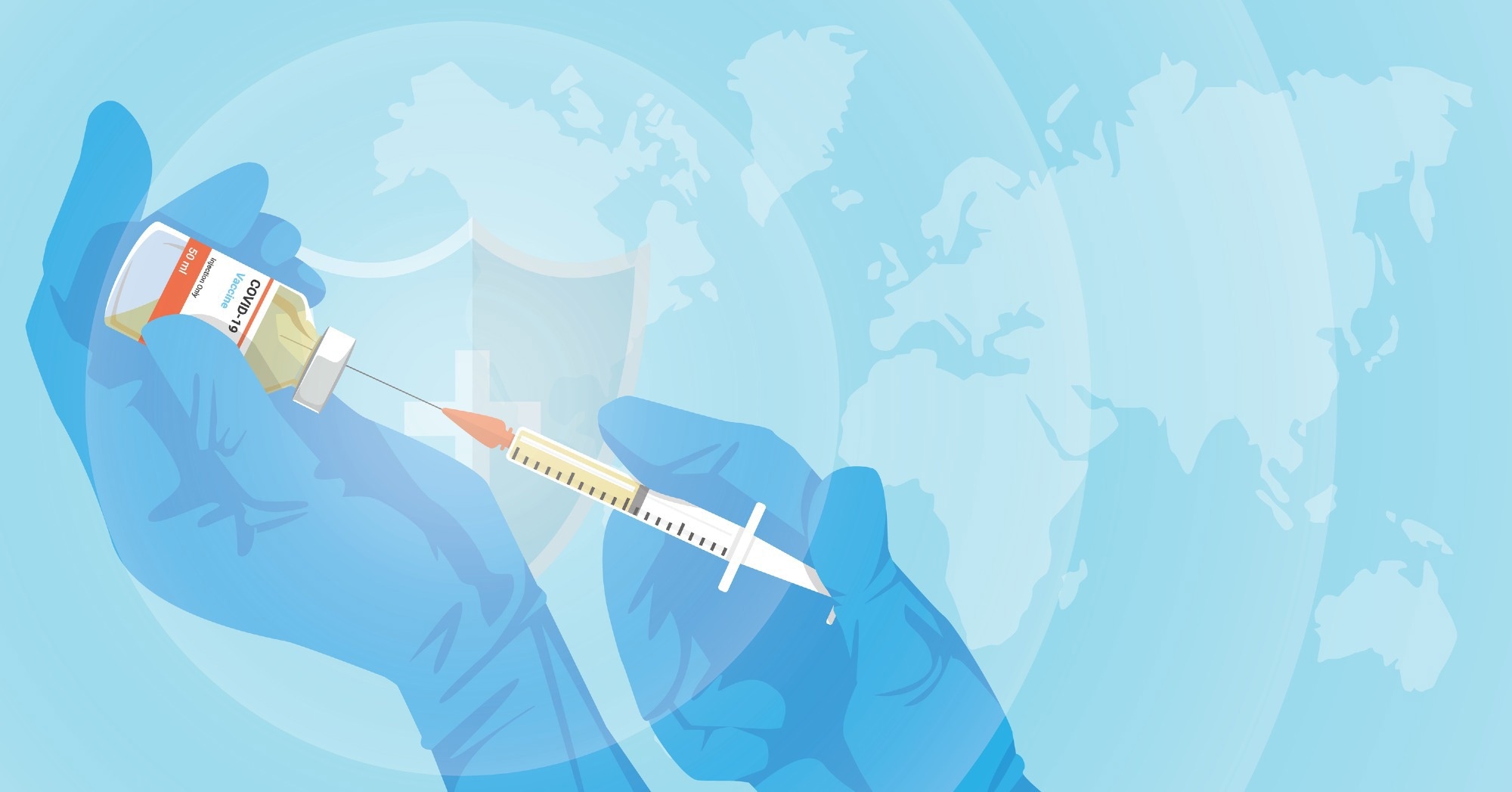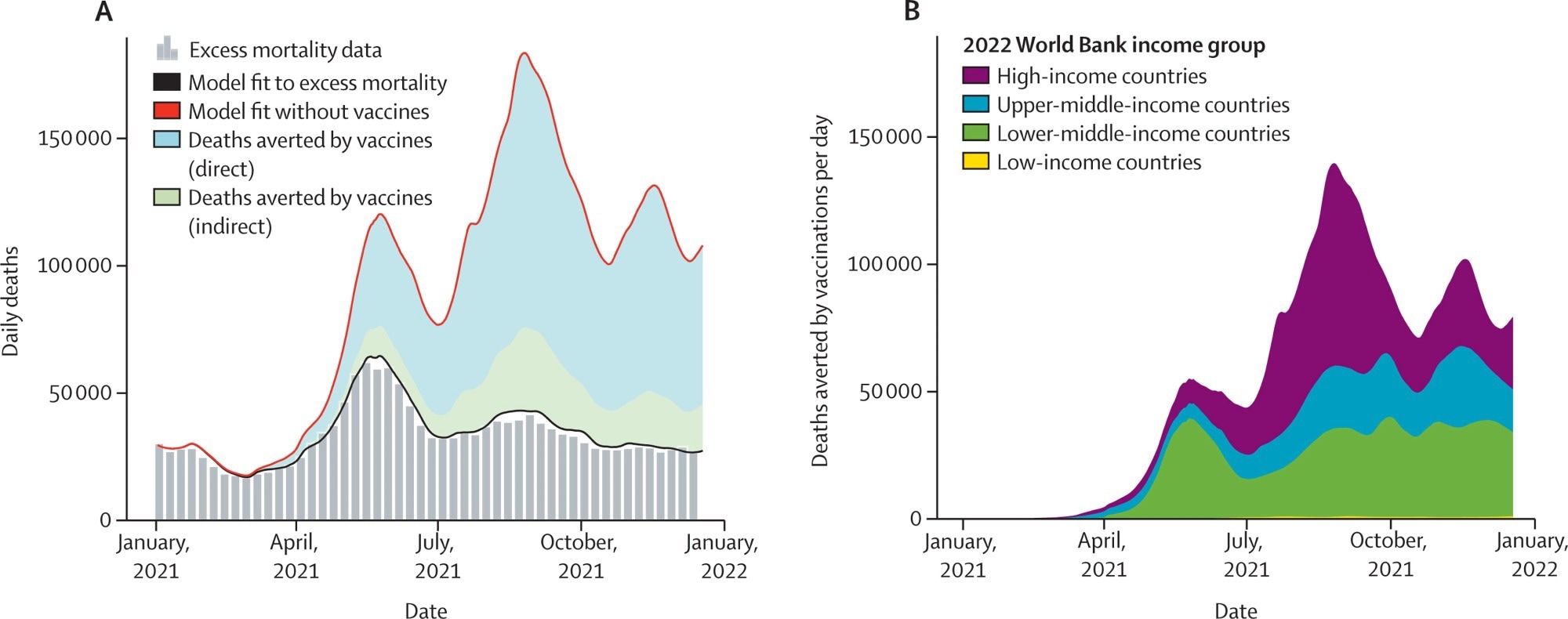In a recent study published in The Lancet journal, researchers at Imperial College London quantified the impact of the coronavirus disease 2019 (COVID-19) vaccination programs in 185 countries and territories between December 8, 2020, and December 8, 2021.
 Study: Global impact of the first year of COVID-19 vaccination: a mathematical modelling study. Image Credit: Foxeel / Shutterstock
Study: Global impact of the first year of COVID-19 vaccination: a mathematical modelling study. Image Credit: Foxeel / Shutterstock
Background
The COVID-19 Vaccines Global Access (COVAX) Facility and World Health Organization (WHO) had global vaccination coverage targets of 20% and 40%, respectively, to be achieved between 2020 and 2021 to ensure global vaccine equity.
The researchers extensively searched the Public/Publisher MEDLINE (PubMed) database up to April 2022 and identified only eight studies that estimated the impact of COVID-19 vaccination. These studies focused only on specific regions, such as WHO European Region and some states in the United States. Furthermore, these studies did not account for the indirect factors contributing to the impact of COVID-19 vaccination.
About the study
In the present mathematical modeling-based study, the authors estimated the global impact of COVID-19 vaccination up to December 8, 2021. They fitted severe acute respiratory syndrome coronavirus 2 (SARS‐CoV‐2) transmission models to reported deaths and excess mortality as a substitute for COVID-19 deaths during the early pandemic.
By using excess mortality estimates, the present study more accurately estimated the impact of COVID-19 vaccination in countries with weaker surveillance systems. The team quantified the protection among vaccinated individuals and the indirect protection conferred upon all those living among vaccinated populations due to the reduced infection risk. Additionally, they quantified the impact of vaccination had there been global vaccine equity.
Briefly, the researchers used a susceptible-exposed-infectious-recovered-susceptible (SEIRS) model to fit in country-level data. They fitted the model to the official number of the COVID-19 deaths in a Bayesian framework using a MetropolisHastings Markov Chain Monte Carlo-based sampling scheme for each country to fetch a time-varying level of SARS-CoV-2 transmission Rt. Rt denoted the average number of secondary infections in the absence of both prior infection-induced and vaccine-induced immunity.
By fitting the model directly to mortality, the researchers indirectly captured the impact of non-pharmaceutical interventions (NPIs) on the COVID-19 pandemic. They derived vaccination rates for first and second doses in each country from the Our World in Data (OWID) database and the WHO dashboard.
COVID-19 mortality has been under-documented worldwide. Due to the heterogeneity in reporting COVID-19 deaths in some countries and periods, the team used model-based estimates of all-cause excess mortality, first produced by the news daily, 'The Economist.'
The researchers took 100 draws from Rt distribution and vaccine efficacy estimates for each country. Based on the assumption that the epidemic in each country followed a similar Rt trend, first, they simulated a counterfactual scenario in which no vaccines were available. In the second counterfactual scenario, although vaccines were administered, they resulted in no indirect effects. The third scenario predicted the trajectory of the pandemic for the study model and most closely matched reported COVID-19 or excess deaths in each country.
The researchers did not adjust the Rt trends for NPIs, and the emergence of variants had vaccines not become available. However, they characterized the relationship between the infection fatality ratio (IFR) and the assumed degree of immune evasion of the Delta variant.

Global COVID-19 deaths averted due to vaccination based on excess mortality (A) Median number of daily COVID-19 deaths based on excess mortality estimates (grey vertical bars) in the first year of vaccination. The baseline estimate of daily COVID-19 deaths from the model fit to excess mortality is plotted with the solid black line and the counterfactual scenario without vaccines is plotted with a red line. The gap between the red and black line indicates the deaths averted due to vaccination, with the proportion of total deaths averted by direct protection conferred by vaccination shown in blue and indirect protection shown in green. (B) Median number of daily deaths averted per day as per 2022 World Bank income group.
Study findings
Based on official data on COVID-19 deaths, the authors estimated that vaccinations prevented 14.4 million deaths in 185 countries and territories during the one-year study duration.
Based on excess mortality estimates, they observed that vaccinations halved the potential global death toll and averted around 19.8 million deaths in a year. The latter represents the true extent of the first year of the pandemic, showing a global reduction of 63% in total deaths due to vaccination.

Median deaths averted by vaccinations per 10 000 people by country in the first year of COVID-19 vaccination Estimates of deaths averted were based on model fits to excess mortality and were binned within seven equal quantiles starting at 0 deaths averted. Deaths averted listed as not applicable for China because of its exclusion from our analysis, due to its unique position as the origin of the detected epidemic and large influence on estimates of deaths averted stemming from its population size.
Furthermore, the study model estimated aversion of 41% of excess mortality or 7.4 million deaths in COVAX Advance Market Commitment (AIM) countries. If low-income countries had met the vaccination coverage targets of the COVAX, vaccination could have averted an additional 45% of deaths by the end of 2021. Likewise, an additional 111% of deaths could have been averted by the end of 2021 had each country met the 40% target set by WHO.
Conclusions
Despite concerted efforts by the WHO and COVAX Facility, low-income countries had limited access to COVID-19 vaccines. The study findings reinforced the urgent need to increase global vaccine equity and coverage. Nevertheless, the study showed how COVID-19 vaccines saved millions of lives globally and altered the course of the pandemic.
- Global impact of the first year of COVID-19 vaccination: a mathematical modelling study, Oliver J Watson, Gregory Barnsley, Jaspreet Toor, Alexandra B Hogan, Peter Winskill, Azra C Ghani, Lancet Infect. Dis. 2022, DOI: https://doi.org/10.1016/ S1473-3099(22)00320-6, https://www.thelancet.com/journals/laninf/article/PIIS1473-3099(22)00320-6/fulltext#articleInformation
Posted in: Child Health News | Men's Health News | Medical Research News | Women's Health News | Disease/Infection News
Tags: Coronavirus, Coronavirus Disease COVID-19, Efficacy, immunity, Mortality, Pandemic, Respiratory, SARS-CoV-2, Severe Acute Respiratory, Severe Acute Respiratory Syndrome, Syndrome, Vaccine

Written by
Neha Mathur
Neha is a digital marketing professional based in Gurugram, India. She has a Master’s degree from the University of Rajasthan with a specialization in Biotechnology in 2008. She has experience in pre-clinical research as part of her research project in The Department of Toxicology at the prestigious Central Drug Research Institute (CDRI), Lucknow, India. She also holds a certification in C++ programming.
Source: Read Full Article
